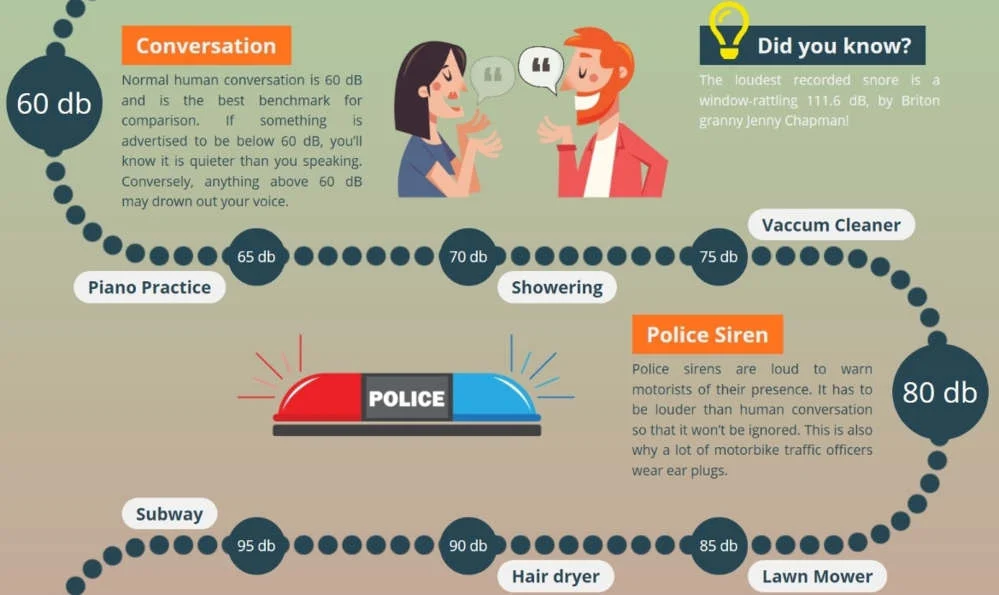Decibel Chart and Human Speech: How Loud Do We Talk?

Human speech is an integral part of daily life, enabling us to communicate with each other in various settings, from casual conversations to formal discussions. While we may not always think about it, the loudness of our speech can have significant effects on how well we communicate and how others perceive us. Understanding how loud we speak, and how speech intensity compares to other sounds in our environment, is essential in many aspects of communication, from public speaking to social interactions. This is where a decibel chart can come in handy.
A decibel (dB) is a unit of measurement used to quantify the intensity of sound. The decibel scale is logarithmic, meaning that each increase of 10 dB represents a tenfold increase in the intensity of sound. This scale is often used to measure everything from the quietest whispers to the loudest jet engines. Understanding where human speech falls on this scale can help us evaluate its impact on our environment and how we can adjust our speech for effective communication.
The Decibel Scale and Human Speech
Human speech typically falls within a range of 50 to 70 dB, depending on the context and the individual’s speaking volume. The decibel chart helps to quantify speech in comparison to other sounds, providing insight into how our voice carries and how it can affect those around us. Below is a breakdown of how human speech compares to other sounds:
- Whisper: 20-30 dB
A whisper is one of the quietest forms of communication, typically ranging from 20 to 30 dB. Whispering is commonly used when we want to speak privately or not disturb others. The sound intensity at this level is barely above the threshold of hearing, meaning that only those in close proximity can hear the conversation. - Normal Conversation: 60-70 dB
This is the typical range for everyday speech, such as having a conversation with a friend or colleague. At 60-70 dB, speech is clear and easily heard within a reasonable distance, but it is not loud enough to be disruptive in most environments. This is the baseline for most forms of communication in social and professional settings. - Shouting: 85-90 dB
When we raise our voices to speak over background noise or to get someone’s attention, our speech can reach up to 85-90 dB. Shouting at this level can be unpleasant for others, especially if it continues for long periods. Prolonged exposure to speech at this intensity may lead to vocal strain or even long-term damage to the vocal cords. - Public Speaking or Lectures: 70-85 dB
When addressing a crowd in a public speaking environment or during a lecture, the speaker usually aims to project their voice to be heard by a large audience. The voice typically ranges between 70 and 85 dB, ensuring that everyone in the room can hear and understand the speaker. This level is appropriate for speaking in large rooms or auditoriums. - Shouting in Noise: 100-110 dB
In very noisy environments, such as construction sites or busy streets, individuals may need to shout to be heard over the din. In these cases, shouting can easily reach up to 100-110 dB. At these levels, shouting is not only uncomfortable for others but also risks causing permanent hearing damage if exposure is prolonged.
The Impact of Speech on Hearing
While the decibel levels of human speech might not seem very loud compared to other environmental sounds like jet engines or fireworks, exposure to loud speech over extended periods can still have an impact on hearing. Sounds at or above 85 dB can be damaging to hearing, especially if the exposure is continuous. For example, shouting or speaking loudly in noisy environments can lead to both vocal strain and hearing loss.
Long-term exposure to high decibel levels—whether from background noise or from shouting—can cause the hair cells in the inner ear to become damaged. These hair cells are responsible for transmitting sound signals to the brain, and once they are damaged, they do not regenerate, leading to permanent hearing loss. The risks of hearing damage are especially high in environments where people routinely speak at high volumes.
Why Understanding the Decibel Chart Matters
The decibel chart provides a helpful framework for understanding how different sounds, including human speech, impact our environment and health. By knowing the decibel levels of different forms of speech, we can make informed choices about how to communicate in various settings, ensuring that our voice remains effective without risking harm to our hearing or the hearing of others.
For example, in public speaking, it’s important to project your voice enough for the entire audience to hear, but not to the point where you’re shouting. Knowing the appropriate decibel range for speech in different environments can help you tailor your communication style to your surroundings. In noisy environments, such as concerts or sports events, using ear protection can safeguard your hearing from both background noise and the loudness of voices in the crowd.
Tips for Safe Communication
- Use an Appropriate Volume: When communicating in noisy environments, avoid shouting excessively. Speak clearly and at an appropriate volume to reduce strain on your voice and to prevent damage to your hearing.
- Take Breaks: If you’re in a loud environment for a prolonged period, take regular breaks away from the noise to give your ears a rest. This can help reduce the risk of hearing damage.
- Voice Projection Techniques: For public speaking or presentations, use techniques such as diaphragmatic breathing to project your voice without straining your vocal cords. This will ensure your speech remains effective without increasing the decibel level unnecessarily.
- Use Ear Protection: In environments where speech volume is high, such as concerts or construction sites, consider using ear protection to safeguard your hearing.
Conclusion
Human speech plays an essential role in communication, and understanding its intensity through the decibel scale can help us ensure that our voice remains effective and safe. From the softest whispers to the loudest shouts, speech is a dynamic aspect of our environment, and knowing how loud we talk can help us avoid the risks associated with excessive noise exposure. By using the decibel chart to guide us in various settings, we can protect our hearing while still engaging in effective and meaningful communication.






